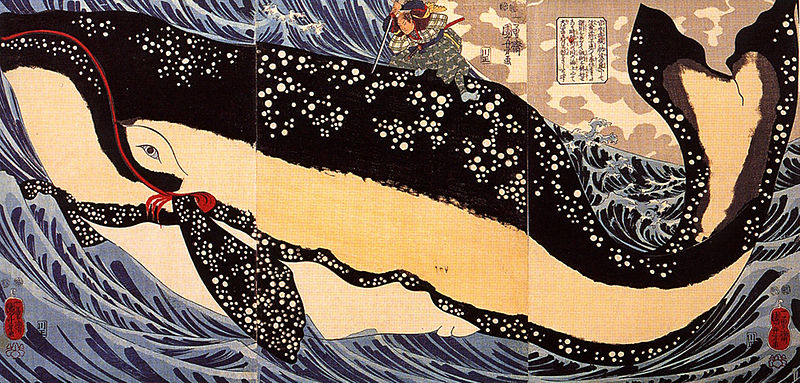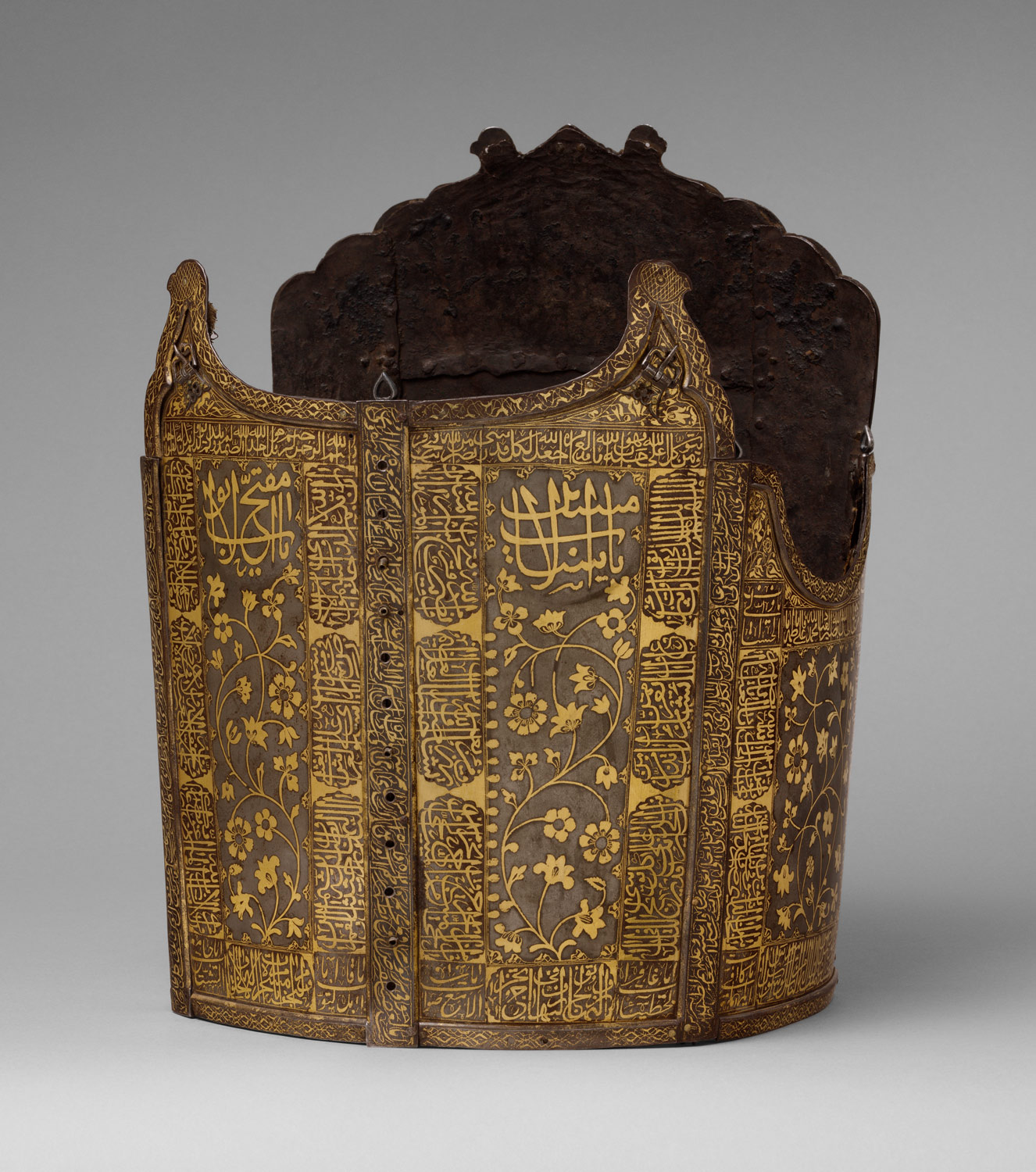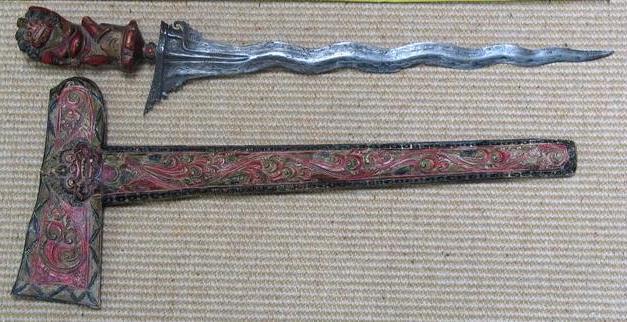The Bridge as a Metaphor
/ I often hear the bridge metaphor in martial arts talk. It has a number of different meanings. Zhang Xuexin used it to describe what he called the bridge stance. His metaphor was a rainbow bridge, probably bamboo, which was a brilliant Chinese structural innovation of the Sung Dynasty.
I often hear the bridge metaphor in martial arts talk. It has a number of different meanings. Zhang Xuexin used it to describe what he called the bridge stance. His metaphor was a rainbow bridge, probably bamboo, which was a brilliant Chinese structural innovation of the Sung Dynasty.The idea is that your legs are like huge bundles of bamboo stuck in the ground at angles leaning over a river. These bundles then have more and more bundles tied to them at progressively lower angels until the two sides of the bridge meet in the middle. By staggering the bundles you create many triangles in the structure and it
 becomes a self supporting woven structure, which is both strong and quite flexible.
becomes a self supporting woven structure, which is both strong and quite flexible.In other words, he was saying that the two legs are a connected structure which is constantly redistributing the weight of the torso.
Luo Dexiu and the gang over at formosaneijia are using the metaphor to mean the act of crossing over. If you are going to have a fight at a bridge and you meet your opponent in the middle, you both have equally limited space to maneuver. Step back and you are below your opponent, step side and you're in the drink.

However; if your opponent decides to cross the bridge first you can gain an advantage by attacking him just as he is exiting the bridge, at the moment where his maneuverability is limited and yours isn't.
This complex metaphor is used to talk about how we enter a fight and close the gap between us. Speed, power, technique, and the use of timing all change dramatically as the two fighters get closer and closer together. (Basically we move through this approximate progression in an instant: Kicks, jabs, stomping, slaps, hooks, throws, knees, elbows, shoulders, more throws, grappling.)
Thus the bridge is often the movement or technique one uses to get in closer. If you "cross the bridge first" your technique should compensate for that moment of vulnerability just as you "get off the bridge." For instance, someone will often step in fast faking with the back of their hand outstretch, if this is met by the opponent's hand, one can can sense the opponents intentions, direction, and power at the moment of contact and spontaneously use that information to inform the next part of their attack.

Others, like the Blacktaoist, are, by extension, using the term bridge to mean one's arm. If the arm is the first contact with the opponent then it needs to have extraordinarily good structure, so that it can take all the heavy traffic that is going to be traveling over it! More traffic, more power. If you have a weak bridge (that can't handle much traffic), it doesn't matter how good your techniques are, your opponent's bridge will send more heavy traffic (o.k. how about troops then?) to dominate your side of the the bridge.

 a cup of tea and hanging out with you.
a cup of tea and hanging out with you.
 subject,
subject,  There was a debate with in the Zen community a few years back about whether the eyes should be open or closed. In the Orthodox Daoist practice of jindan, the eyes change between being closed, open and half open. Some scholars have suggested that a method mentioned in the Zhuangzi called "fixed staring," is actually a form of meditation. In my opinion it could only be a form of trance, there is nothing "fixed" about the eyes or the focus in the practice of meditation.
There was a debate with in the Zen community a few years back about whether the eyes should be open or closed. In the Orthodox Daoist practice of jindan, the eyes change between being closed, open and half open. Some scholars have suggested that a method mentioned in the Zhuangzi called "fixed staring," is actually a form of meditation. In my opinion it could only be a form of trance, there is nothing "fixed" about the eyes or the focus in the practice of meditation.
 When I saw a book titled,
When I saw a book titled,  This is a continuation of my discussion of
This is a continuation of my discussion of 
 This is a continuation of my discussion of Warriors,
This is a continuation of my discussion of Warriors, 
 code, a Samurai needed only two things, fearlessness and a willingness to die. The change from Warrior to skilled technician and martial artist is marked historically with the life of
code, a Samurai needed only two things, fearlessness and a willingness to die. The change from Warrior to skilled technician and martial artist is marked historically with the life of  Most people, including me, first learned internal martial arts and qigong with out a Daoist inspired view.
Most people, including me, first learned internal martial arts and qigong with out a Daoist inspired view. traditional Chinese subject? How do we go about the process of unfolding the subject keeping in mind its traditional context?
traditional Chinese subject? How do we go about the process of unfolding the subject keeping in mind its traditional context? A TRADITIONAL CHINESE ORIENTATION TOWARD KNOWLEDGE.
A TRADITIONAL CHINESE ORIENTATION TOWARD KNOWLEDGE. What is the appropriate attitude with which to approach a traditional Chinese subject? How do we go about the process of unfolding the subject of the Internal Arts keeping in mind their traditional context?
What is the appropriate attitude with which to approach a traditional Chinese subject? How do we go about the process of unfolding the subject of the Internal Arts keeping in mind their traditional context? I'm calling it concentrated efficiency because that is what it seems like from the outside looking in, but to actually embody either a classic text or a internal arts form feels plain, bland and simple. A traditional Chinese scholar can seamlessly weave a classic, they have memorized, in and out of their speech in such a way that someone who is unfamiliar with the classic won't notice. In fact, scholars who have memorized and embodied many classic texts can play games together where they seamlessly string together classic quotes and yet speak to each other from the heart about things which are important to them. In fact, China has a tradition of scholars with huge appetites for study who can actually quote continuously with genuineness and sincerity. To truly embody an internal practice is the same. On the outside one appears to be doing regular everyday movement, but inside the form (or we could say qigong) is happening all the time, it becomes second nature.
I'm calling it concentrated efficiency because that is what it seems like from the outside looking in, but to actually embody either a classic text or a internal arts form feels plain, bland and simple. A traditional Chinese scholar can seamlessly weave a classic, they have memorized, in and out of their speech in such a way that someone who is unfamiliar with the classic won't notice. In fact, scholars who have memorized and embodied many classic texts can play games together where they seamlessly string together classic quotes and yet speak to each other from the heart about things which are important to them. In fact, China has a tradition of scholars with huge appetites for study who can actually quote continuously with genuineness and sincerity. To truly embody an internal practice is the same. On the outside one appears to be doing regular everyday movement, but inside the form (or we could say qigong) is happening all the time, it becomes second nature. When two different cultures meet, dance is the first art across the border. Music is very close behind. Interaction with another culture has great potential to create change; most societies fear change. This is why societies so often ban or at least try to control dance.
When two different cultures meet, dance is the first art across the border. Music is very close behind. Interaction with another culture has great potential to create change; most societies fear change. This is why societies so often ban or at least try to control dance.